#Philip van doren stern
Text
It’s a Wonderful Life (1946)

Everyone knows what It’s a Wonderful Life is about. How many times have we seen a television series ape its story? The protagonist is at their lowest, they begin believing things would be better if they had never been born, some otherworldly presence comes to show them otherwise. That is what happens in this 1946 classic but it’s also an oversimplification. Until you’ve sat down and actually watched it, you have no idea what this movie is actually about.
All his life, George Bailey (James Stewart) has wanted to travel the world. Unfortunately, his selflessness and responsibilities have prevented him from leaving Bedford Falls. Eventually, he inherits the responsibility of running the Bailey Brothers Building and Loan - a small bank that welcomes anyone who doesn’t want to go to the greedy Henry F. Potter (Lionel Barrymore). When the bank’s funds go missing, he loses all hope and contemplates suicide.
There’s much more to this story than its central conflict. A major portion of the plot concerns the romance between George and Mary Hatch (Donna Reed), the woman who’s had a crush on him since they were young. Their first date has the kind of moments that will remind you why you fell for the guy/gal next to you. What Mary saw in George back then and what she does now is so obvious. Money-wise, he may be poor but in spirit and in friends, he’s rich.
James Stewart is so good in this role. He’s cheery and easy to laugh with but there’s always a hint of sadness right there, behind the main thing. Over and over, you see George slice a little bit off the top and give it to someone who needs it. What he has left is meagre but he always manages and although he doesn’t realize it, we - and everyone who’s ever met him - recognize him as a hero. Not the kind that wins medals; those you only need during extraordinary circumstances. George Bailey is the everyday kind of hero, the kind who refuses to compromise even when raising his hand and speaking out could be to his detriment. Opposing him at seemingly every turn are normal, everyday injustices, unfortunate chance, and greed, all of which Henry F. Potter embodies. You hate Potter because he’s so real. You know there are people just like him everywhere and there are far too few George Baileys to stand up to them.
If you go into the film for its iconic Christmas scenes in which everything goes wrong and George prepares to make a decision from which there is no turning back, you’ll be waiting a while. The picture is over two hours, with the bulk of it focussing solely on George, his relationship with Mary, their family, and the town that comes to love him. If you're going in just to see George's guardian angel, Clarence (Henry Travers) show him how he has touched the lives of the Bedford Falls community, It's a Wonderful Life can feel long. It’s one of those cases where the film’s reputation doesn’t do it any favours because you expect one thing and get something else. Once you get over that initial shock, however, you’re completely won over. After seeing George work hard to do what’s right every day, no matter what, you want more than anything for him to see what you see. Everyone wants to believe they matter. Being shown first-hand how much good one person can do lifts your heart. You might not be George Bailey, but you might be half of one and that’s still pretty great.
It’s a Wonderful Life is a deeply moving film. It highlights humanity’s very best qualities. It’s also romantic, occasionally funny, wonderfully acted and full of life. The characters feel like real people, people you’ve met before, collected together to tell you this very personal message. It takes no effort for you to set aside your initial disappointment because while Frank Capra’s most iconic film (that’s saying something) might not be the movie you think it is going in, it is the movie you want it to be by the end. (On Blu-ray, December 13, 2020)

#It's a Wonderful Life#movies#films#movie reviews#film reviews#Christmas movies#Christmas Films#Frank Capra#Frances Goodrich#Albert Hackett#The Greatest Gift#Philip Van Doren Stern#James Stewart#Donna Reed#Lionel Barrymore#Thomas Mitchell#Henry Travers#Beulah Bondi#Ward Bond#Frank Faylen#Gloria Grahame#1946 movies#1946 films
0 notes
Text
25 Christmas Short Stories To Read This December
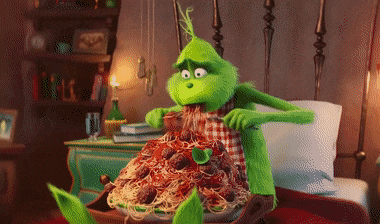
The Gift Of The Magi by O. Henry
A Christmas Dream by Louisa May Alcott
The Adventure Of The Blue Carbuncle by Sir Arthur Conan Doyle
How The Grinch Stole Christmas by Dr. Seuss
The Polar Express by Chris Van Allsburg
Christmas At Red Butte by L.M. Montgomery
The Little Match Girl by Hans Christian Anderson
The Christmas Banquet by Nathaniel Hawthorne
A Christmas Memory by Truman Capote
The Tailor of Gloucester by Beatrix Potter
At Christmas Time by Anton Chekhov
A Merry Christmas by Louisa May Alcott
The Christmas Guest by Peter Swanson
The Dead by James Joyce
The Elves and The Shoemaker by The Brothers Grimm
A Child’s Christmas in Wales by Dylan Thomas
A Hint for Next Christmas by A.A. Milne
The Nutcracker and the Mouse King by E.T.A. Hoffmann
The Adventure Of The Christmas Pudding by Agatha Christie
The Burglar’s Christmas by Willa Cather
A Letter From Santa Claus by Mark Twain
The Fir Tree by Hans Christian Anderson
The Greatest Gift by Philip Van Doren Stern
The Legend Of The Christmas Tree by Lucy Wheelock
Papa Panov’s Special Christmas by Leo Tolstoy
#books#book blog#booklr#readblr#book reccs#book recommendations#bookaddict#bookblr#bookworm#books and reading#christmas#christmas cheer#christmas time#christmas books#christmas gift
15 notes
·
View notes
Note
It's a Wonderful Life
A 1946 American Christmas fantasy drama film produced and directed by Frank Capra. It is based on the short story and booklet The Greatest Gift self-published by Philip Van Doren Stern in 1943, which itself is loosely based on the 1843 Charles Dickens novella A Christmas Carol. The film stars James Stewart as George Bailey, a man who has given up his personal dreams in order to help others in his community and whose thoughts of suicide on Christmas Eve bring about the intervention of his guardian angel, Clarence Odbody. Clarence shows George all the lives he touched and what the world would be like if he did not exist.
Every time that bell rings, a pesky bird gets his wings.
... it's JANUARY.
#WHAT on EARTH- /lh#bad traffic idea#??????#ask#trafficblr#?!?!??#tw suicide#it's a wonderful life#i SUPPOSE
9 notes
·
View notes
Text
Happy Christmas in July!
Transcript below the break.
Hello and welcome back to the Rewatch Rewind! My name is Jane, and this is the podcast where I count down my top 40 most frequently rewatched movies in a 20-year period. Today I will be celebrating Christmas in July by discussing number 18 on my list: Liberty Films and RKO’s 1946 holiday classic It’s a Wonderful Life, directed by Frank Capra, written by Frances Goodrich, Albert Hackett, Frank Capra, and Jo Swerling, based on a story by Philip Van Doren Stern, and starring James Stewart and Donna Reed.
George Bailey (James Stewart) has always had big dreams of traveling and building things, but instead he’s stuck in his small hometown of Bedford Falls, New York, managing the family building and loan business. When his absent-minded Uncle Billy (Thomas Mitchell) misplaces $8,000 of company money, George feels that he is worth more dead than alive and plans to end his life on Christmas Eve, when he is stopped by Clarence Oddbody, Angel 2nd Class (Henry Travers) who has been sent from heaven to save him. George tells Clarence he wishes he’d never been born, so Clarence shows George what the town would be like without him.
As I’ve mentioned before, my family didn’t have a VCR in the ’90s, but we did sometimes watch movies together when they came on TV, so we caught It’s a Wonderful Life pretty much every year. I don’t know exactly how old I was when I first watched it, but I do remember being confused that it was in black and white. Once we finally got a VCR, we taped it one year so we could watch it whenever we wanted, and then eventually we got it on DVD. At some point we decided that it made a good Thanksgiving movie in addition to a Christmas one, since it’s about being grateful for what you have, so I tended to watch it once or twice a year for a while. I’d probably seen it about 10 times before I started keeping track, and then I saw it once in 2003, once in 2004, twice in 2005, once in 2006, three times in 2008, twice in each year from 2009 through 2012, and then once each in 2013 and 2014, and then once in each year from 2020 through 2022. I don’t remember exactly why I took such a long break after 2014, and I think it was probably a combination of factors, but I do remember reading an article probably around then arguing that Bedford Falls actually would have been more fun without George and that he should have gone to jail anyway that kind of ruined the movie for me a bit. While I recognize that there are legitimate criticisms to be made of the story and message and other details (such as the nonsensical decision to make AS2 the abbreviation for Angel Second Class), for me, the good definitely outweighs the questionable.
For one thing, the acting is superb. Everybody’s at the top of their game, with character actors such as Ward Bond, Frank Faylen, and Beulah Bondi doing some of their best work, and some very impressive child acting, particularly from Bobbie Anderson and Karolyn Grimes. Thomas Mitchell knows exactly when to play Uncle Billy’s memory issues for comic relief and when to reveal how devastating they can be. Henry Travers similarly gives the audience a perfect balance of chuckles and tears. Frequent femme fatale Gloria Grahame makes the initially shallow Violet Bick surprisingly sympathetic. The character of Mary Hatch Bailey is also deceptively simple on the surface, but Donna Reed brings her to life with so much warmth and depth and complexity that it takes several rewatches to fully appreciate her. Lionel Barrymore perfectly embodies the evils of capitalist corruption as Potter, in one of the most diabolical villain performances of all time. And then there’s James Stewart. My man Jimmy. I’m kind of surprised I haven’t had an opportunity to talk about him on this podcast before now, since he’s definitely one of my faves. His performance as George Bailey is SO. GOOD! Just thinking about it gives me chills. We see George go from a young man full of hopes and dreams to a frustrated, drained, broken middle aged man at the end of his rope, to a man trying to make sense of the reality of his non-existence who ultimately learns that he’s a better and more important person than he thought he was. It’s a major emotional roller coaster, and Jimmy Stewart absolutely nails every moment of the ride. It’s rare for a Hollywood film to let a male protagonist get anywhere near as emotionally raw and vulnerable as George Bailey is at several points throughout this film, but Stewart was clearly not afraid to cry on screen, and it’s beautiful to watch.
The sets and visual effects are also beautiful and noteworthy. Falling snow on film used to be created with cornflakes painted white, but a new snow effect using fire extinguisher foam mixed with soap and water was developed for It’s a Wonderful Life. Using this allowed the sound to be recorded live, which had been impossible with crunchy cornflakes, and I feel like it enhanced the performances to not have to record the dialogue separately. The Bedford Falls set was one of the longest sets that had ever been made for an American movie, and the streets and buildings do an excellent job of bringing the audience into the town. Apparently three different cinematographers worked on this movie (they kept getting fired due to disagreements with the director), but the look and feel of the film is remarkably consistent and unique. Plenty of movies set in small towns were made during this era, but somehow none of them feel quite like this one. That could just be my own nostalgia, since this was the first one I saw, but there’s just something about Bedford Falls that sets it apart from other movie settings, and that’s a big part of what I love about this movie. The sets and the lighting and the performances are so engrossing that no matter how many times I rewatch it, I still feel like I’m part of the town, and like I’m interacting with the characters, in a fresh and unique way.
It's interesting that I’m talking about two 1946 movies in a row because I think that, like Notorious, It’s a Wonderful Life could really only have been made that year. James Stewart had left Hollywood to fight in World War II and was considering giving up acting for good when Frank Capra asked him to star in this film. Capra had spent the war making documentaries and propaganda films, and this was also his first post-war movie. Now, I’ve never fought in a war, and my parents are baby boomers so I definitely wasn’t around for World War II, but it stands to reason that their wartime experiences significantly impacted the people involved in making this film and were still fresh on their minds. Stewart apparently said that his PTSD and depression from the war helped him relate to George Bailey, and that acting out George’s anger and frustrations was cathartic for him. The US was also at its most anti-fascist at this time, as James and I briefly discussed last week, which I assume is what allowed this movie to be so blatantly anti-capitalist. Building and Loan associations don’t really exist anymore, but based on my understanding of the Bailey business from this movie, they seem kind of like mutual aid mortgages. Because George holds onto this institution, the people of Bedford Falls are able to afford to buy decent homes for themselves. The alternative that Potter wants is everyone paying him exorbitant rent. By capitalist standards, George is a failure, and was incredibly foolish for turning down Potter’s lucrative job offer in the middle of the movie. But the film portrays him as a hero precisely because he values people over money. When he’s at the end of his rope, Potter has the power to save him (especially because he’s the one who has the cash that Uncle Billy lost) but he refuses; it’s George’s friends and family who rally around to help him. And that sounds like something that would have been considered dangerously close to socialism in the McCarthy era. The Hollywood blacklist started in 1947, so I feel like It’s a Wonderful Life couldn’t have been made even a year later than it was without significant modifications.
One of the main focuses of the story is the romance between George and Mary, but I feel like even that is used as a demonstration of the shortcomings of our capitalist society. They are clearly drawn to each other, but George initially tries to pretend otherwise, in large part because he doesn’t feel good enough for her. She has a college education; he does not. Their wealthy friend, Sam Wainwright, is interested in Mary, and George feels like she would be better off with Sam, even though all she wants is George. They spend all their honeymoon money on supporting Building and Loan clients during a bank run, at Mary’s suggestion, but George later regrets that he couldn’t afford to provide for both his clients and his wife. Mary is perfectly happy with their life, but George feels like a failure by society’s standards and can’t see anything else, so he needs Clarence’s reality check to show him that he has always been enough for her. If George wasn’t constantly being bombarded with the message that he should be making more money, that he should have been able to leave Bedford Falls and make something more of himself, that he should be able to buy his wife and children extravagant things, maybe he could have been happy without divine intervention.
But also we need to talk about what happens to Mary in the alternate reality when George doesn’t exist because I have some very mixed thoughts about that. Earlier, right after George turned down Potter’s offer, he asked Mary why she married a guy like him and she replied, “To keep from being an old maid.” So when George doesn’t exist, she is an old maid. I remember as a teenager who didn’t know that being aroace was a thing and didn’t want to examine why I only ever had “crushes” on celebrities who were already dead, thinking that Mary’s attitude made perfect sense: if you can’t marry Jimmy Stewart, why get married at all? The part that has always confused me is when George begs Clarence to tell him where Mary is, and Clarence says, “You’re not going to like it, George.” Wouldn’t he like it less if she had married someone else? Isn’t it good that she’s consistent with her assertions that he’s the only man for her? I like to think that Mary is on the aromantic spectrum, and feels romantic attraction so rarely that if she hadn’t met George she would never have felt it at all, but even I have to admit that the movie isn’t really trying to say that. It seems to be implying that Mary ending up a librarian with no husband is the worst possible fate for her, which is an infuriatingly amatonormative attitude for a story that otherwise encourages resistance to societal pressures. But overall, I give George and Mary’s romance a pass, because I do think they have a fascinating dynamic, and also because the movie focuses a lot on community and other non-romantic relationships too.
There’s a lot of emphasis on family relationships, and the brotherly bond between George and Harry that is slightly tinged with envy is particularly well done. Harry gets a lot of opportunities that George wants, but George chooses to be happy for and supportive of him rather than resenting him too much. And Harry’s toast at the end – “To my big brother, George, the richest man in town” – is one of the moments guaranteed to make me cry every time. When George is young, he kind of looks down on his father, but finally starts to appreciate him shortly before his death, although not quite enough to understand that it’s good that he follows in his father’s footsteps. His relationship with his mother is very sweet, and the part when she doesn’t recognize him is perhaps the most devastating moment in the movie. I really wish we got to see George interact with his children a bit more; we mostly see them when he’s taking out his work frustrations on them, which doesn’t seem like a typical interaction. His scene with Zuzu and the flower is adorable though. And then there are all the friendships. I don’t know if the Sesame Street characters were named after them, but Bert the cop and Ernie the cab driver have a fun relationship with each other and with George, and I appreciate that we get glimpses of how miserable they both are in the alternate reality. Violet is another interesting character, and at some points it almost seems like she’s being set up as a romantic rival for Mary, but she and George remain a rare good example of male/female friendship. And there are so many other great interactions between the townspeople; it feels like a real community. And it is that community of friends and acquaintances that come together at the end to help George and show him that he’s not alone, and that he has made a positive difference in all their lives. Granted, it’s very clear that Mary is the most important person to him, so the movie does reinforce the relationship hierarchy established by amatonormativity, but at the end, what does Clarence write in the book? “No man is a failure who has friends.”
I want to talk a little bit about representation in this film. There is only one black character, Annie, played by Lillian Randolph, who is, predictably, a maid, and while she is a pretty awesome character, she’s not in very much of the movie, and all the other characters are white. Disappointing, but not surprising for a 1940s Hollywood film. Similarly, while we get a few fabulous female characters, there are a lot more men than women. However, I feel like this movie has better disability representation than the average 2020s movie. It’s a Wonderful Life shows that it’s not that hard to incorporate an actor’s disability into a movie without it being the main focus of the story or the character. They really said, “You use a wheelchair? Awesome, your character uses a wheelchair now.” Of course, they were probably willing to provide more accommodations for the legendary Lionel Barrymore than they would have for an unknown disabled actor, but even he had been replaced in the 1938 film version of A Christmas Carol, in which he’d been slated to play Scrooge, because he couldn’t walk anymore. So I really like that It’s a Wonderful Life showed how effectively he could play a Scrooge-like character without walking.
I also really appreciate that It’s a Wonderful Life is very similar to A Christmas Carol, but kind of flipped. A Christmas Carol motivates the wealthy miser to change his behavior by showing him how happy people would be without him; It’s a Wonderful Life motivates the poor man to change his self-perception by showing him how unhappy people would be without him. A Christmas Carol’s message is that nobody is beyond redemption, which I do believe, but It’s a Wonderful Life responds with, “Let’s be realistic: the extremely rich aren’t going to change their ways; we need to do what we can to limit their power.” Which is a message that, if anything, has only gotten more relevant in the last 77 years. Most of my top 40 movies are fun, silly, entertainment that I use to escape the harshness of reality, but while this movie does have some fun moments, it’s less of an escape and more of a reflection of that harshness. I watch movies like Emperor’s New Groove and Mamma Mia and Bringing Up Baby and Ella Enchanted when I need to laugh; I watch It’s a Wonderful Life when I need to cry. Sometimes I have trouble regulating or understanding my feelings, and a big part of what I love about movies is the way they let us experience deep emotions in a relatively safe and controlled environment. It’s a Wonderful Life has been scorned by some film critics as overly sentimental, and perhaps it is, but I guess I don’t see anything wrong with being overly sentimental every once in a while. Sometimes you just need to feel feelings.
Thank you for listening to me discuss another of my most frequently rewatched movies. Next up is the shortest in a 4-way tie of movies I watched 22 times in the last 20 years, which is another one that I had seen many times before I started keeping track. As always, I will leave you with a quote from that next movie: “This is yet another example of the late neoclassic Baroque period. And, as I always say, ‘If it’s not Baroque, don’t fix it!’”
#it's a wonderful life#james stewart#donna reed#lionel barrymore#frank capra#the rewatch rewind#finally caught up on posting these!#sorry i got behind
3 notes
·
View notes
Text
Rewatching It's A Wonderful Life
Not a year goes by without a nationwide re-release of Frank Capra’s festive classic It’s A Wonderful Life (1946). Over recent years, the film has regularly been screened by mainstream cinema chains in Wales as well as independent venues like Chapter and Tramshed in the capital. This year’s most imaginative showing will take place at the National Waterfront Museum in Swansea. With a musical adaptation by Paul McCartney and Lee Hall (Billy Elliott & Rocketman) seemingly set to bring this magical tale to a whole new generation of fans, Kevin McGrath takes a look at the unique story of how a movie that flopped at the Oscars and which barely made a dent at the box office somehow became an enduring part of Christmas for so many.
Frank Capra’s post-war masterpiece It’s A Wonderful Life has rightly gone down in film history as one of the greatest feel-good movies of all time. From its humble beginnings as The Greatest Gift, an unpublished short story that author Philip Van Doren Stern turned into a 24-page pamphlet-come-Christmas card, it has become the most cherished of all movies, regularly figuring in best picture polls either side of the Atlantic. For many in America, Christmas simply isn’t Christmas without the family gathering around the TV to watch this incredibly affecting festive tale. And it was TV, of course, that had rescued the film from relative obscurity when its copyright was allowed to lapse in 1974. By 1984, The Wall Street Journal discovered, 152 public stations and 175 commercial stations had taken up the rights to broadcast the movie).
The reason that It’s A Wonderful Life continues to stand the test of time today must surely be attributed to the flawless filmmaking of its visionary director Frank Capra. Prior to the outbreak of the Second World War (during which he made the exemplary documentary series, Why We Fight), Capra had established himself as one of Hollywood’s premiere directors, with a string of box office smashes to his name. The most notable of which, 1934’s romantic comedy It Happened One Night, became the first film to win all five major Academy Awards picking up Oscars for Best Picture, Best Actor, Best Actress, Best Screenplay and, of course, Best Director. Capra had become a master craftsman and a master storyteller, specialising in crowd-pleasing ‘moral fables’ about the honest Joe, the American everyman, who stands up for ‘liberal’ ideals and values against corrupt businessmen and politicians.
Screen giants like James Stewart and Gary Cooper had turned in widely acclaimed performances in Capra’s Mr. Smith Goes To Washington and Meet John Doe respectively, and it was to Stewart, his most trusted actor, that Capra turned when casting the part of quintessential nice-guy George Bailey. Stewart, one of the few major stars to enlist in the war against fascism, had been away from Hollywood for the best part of five years, and was in anguish about resuming his acting career when Capra called to offer him the role, that ultimately, film critics would regard as the finest of his distinguished career. Luckily, the director was able to talk Stewart around, and the rest, as they say, is history!
Stewart’s nuanced portrayal of the decent, unselfish, yet ultimately tormented Bailey, offers us a masterclass in screen acting. It’s as if Stewart had never been away as he plays through a succession of comic, romantic and dramatic scenes with absolute confidence. Stewart is able to convince us of George’s good heart and of his deeply felt moral opposition to scurrilous Banker Henry Potter, whilst also capturing the frustration eating away at his character’s soul as he sees life passing him by and his friends making their own mark on the world. George Bailey is a man desperately divided against himself, as Stewart’s reflective performance gradually makes clear.
Thankfully, his fellow actors are equally as good, with Lionel Barrymore proving to be an inspired piece of casting in the role of Potter, the Dickensian villain who tries to drive the Bailey family business into ruin in his quest to monopolise the wealth of Bedford Falls. (Capra had surely noted Barrymore’s legendary portrayal of Scrooge for the Campbell Playhouse dramatisation of A Christmas Carol, broadcast each Christmas Eve since 1934). And, as the years have gone by, it’s become impossible to imagine anyone other than the whimsical Henry Travers as the very special emissary Clarence Oddbody, whose celestial mission it is to save George Bailey from the tragic fate that awaits him on Christmas Eve.
The movie begins with George’s family and friends frantically seeking divine intervention to help him through a spiritual crisis at Christmas and uses the device of extended flashbacks to tell the tale of a young boy/college student determined to travel the world, all the while threatening to “shake the dust of this crummy little town off my feet”. He subscribes to National Geographic magazine and spends his days dreaming of “going out exploring someday’. A family tragedy and financial difficulties combine, though, to ensure George’s ambitions are thwarted at every turn, as he finds himself trapped into running the family Building and Loan Company, the only institution in town not owned by slum landlord Potter. George is loved by the whole of Bedford Falls for standing alone against Potter time and again, and, in a crucial scene which illustrates Capra’s humanitarian message, Bailey challenges Potter over his scandalous business practices –
‘Do you know how long it takes a working man to save five thousand dollars? Just remember this, Mr. Potter, this rabble you keep talking about…they do most of the working and paying and living and dying in this community. Well, is it too much to have them work and pay and live and die in a couple of decent rooms and a bath? Anyway, my father didn’t think so. People were human beings to him’.
Stewart is acting out of his straight-laced skin here, violently trembling with anger. For me, it’s one of the most genuinely moving scenes in film history.
Though George has quietly transformed the lives of all those who reside in Bailey Park, he is unable to find consolation in his own achievements. He simply cannot free himself from the resentment he feels, as first his younger brother Harry takes up his place at College, and then as his old friend Sam Wainwright cuts a dash through the business world. Drunk and despairing on Christmas Eve, he wishes he’d never been born.
Throughout the film, Capra remains in complete control of the story. Each scene plays perfectly, the transition between episodes is seamless and the script cohesive from start to finish. This is all the more remarkable given the number of writers involved in developing a screenplay that proved almost impossible to knock into shape. Whilst the final screen credit went to husband and wife screenwriting team Albert Hackett and Frances Goodrich, as well as Capra himself, there were already three fully developed scripts in existence when Capra bought the property from RKO in 1945.
Three of the biggest names in the business had failed spectacularly in adapting Van Doren Stern’s quirky fantasy. Neither Marc Connelly, the Pulitzer winning playwright and fully paid-up member of the Alongquin roundtable, Dalton Trumbo (an Oscar winner for The Brave One) or Clifford Odets, the left-wing firebrand whose work with the Group Theatre had revolutionised Broadway in the thirties, found a way to incorporate the various fantasy/reality elements of the plot into a coherent whole.
While Connolly and Trumbo’s contributions were dismissed out of hand by Capra, some key scenes from the Odets script were retained. According to Jeanine Basinger, curator of the Capra archives, his scripts “bring into focus the elements found in the final movie: the accident on the ice in which Harry nearly drowns; the Gower drug store sequence and George’s marriage to Mary.” It’s worth noting that at this stage the Potter character simply did not exist. The dramatic conflict in each of these scripts was between a good George and an evil George.
None of this turmoil is reflected in the finished movie itself. Capra was able to unfold his story with clarity, balancing the requirements of the plot with his need to convey an uncompromising message to the audience. In the same way that Dickens, who was on a lifelong crusade to improve the conditions of the poor, wrote A Christmas Carol to try and progress social change in Victorian England, so Capra, who was just back from the Second World War, his film cans stuffed with footage of the horrors of the concentration camps, passionately wanted to tell a story that would make a serious statement about the times in which he lived.
Dickens’ plea to his readers was for them to follow the example of a reformed Scrooge when, at the novella’s end, he pledges to “honour Christmas in my heart, and try to keep it all year round”. Capra’s motivation was equally straightforward. He had in mind a reaffirmation of John Donne’s view of the human condition
“No man is an island entire of itself; every man is a piece of the continent, a part of the main”
Still haunted by a war, in which Historians currently estimate, up to 70 million people died, Capra was at pains to point out how one man’s life touches another. His Christmas message was for us all to extend a helping hand to the next fellow.
When I went to see It’s A Wonderful Life at my local cinema, last Christmas, the usherette, on taking my ticket said: “I hope you’ve brought a supply of hankies”. Indeed, I had. I can never get past that early scene in Gower’s drugstore, where the distraught and drunk chemist brutally slaps a young George Bailey around, without breaking down. And, of course, the famous finale with George, having escaped from his nightmare existence in Pottersville, charging joyously through the snowy streets of Bedford Falls on Christmas Eve, wishing everyone and everything a Merry Christmas, has me in floods of tears every time I have the privilege of viewing it.
Watching It’s a Wonderful Life every Christmas, making it a part of the ritual and tradition of the festive period means it can be hard to be wholly objective about the film as a work of art. For good or bad the film comes imbued, perhaps even burdened, with our own memories and associations. In the darkness, as the credits begin to roll, we suddenly sense The Ghost of Christmas past sitting next to us in the cheap seats.
For others, Capra is too sentimental and the derogatory term “Capra-corn” applied by some cynics to his films has stuck over the years. Look beyond the joyous, feel-good message at the centre of It’s A Wonderful Life though, and there is a real darkness rooted within the heart of small-town America. Capra, having witnessed at first hand the atrocities of a World War, knew all about the evil ordinary people were capable of but remained an optimist and a believer in the brotherhood of man, nonetheless.
0 notes
Text
Today Is…It's A Wonderful Life Premieres
A film about a man who tries to commit suicide by jumping off a bridge into a river before being saved by an Angel who hasn’t won his wings yet isn’t the most festive sounding of movies but that is what ‘It’s A Wonderful Life’ ended up as which is one of the Christmas staples on our televisions every year.The movie is based on the short story ‘The Greatest Gift’ by Philip Van Doren Stern which is…
View On WordPress
0 notes
Text
"George Bailey Was Never Born" Has A New Take On "It's A Wonderful Life"

It's a Wonderful life is a Christmas classic. However, when it was released in 1946, It’s a Wonderful Life was not an immediate hit with audiences. In fact, it put director Frank Capra $525,000 in the hole, which left him scrambling to finance his production company’s next picture, State of the Union.
In addition,though it didn’t make much of a dent at the box office, It’s a Wonderful Life found a whole new life on television—particularly when its copyright lapsed in 1974, making it available royalty-free to anyone who wanted to show it for the next 20 years. (Which would explain why it was on television all the time during the holiday season.) The free-for-all ended in 1994.
Now, iHeartPodcasts and Emmy Award-winning producer Kurt Engfehr and 2022 NAACP Image Award Outstanding Podcast nominee Ray Nowosielski have announced the release of “George Bailey Was Never Born,” a one-of-a-kind podcast experience that takes a definitive look at “It’s a Wonderful Life,” one of the most popular holiday movies of all time.
The series is a co-production of iHeartMedia and Double Asterisk, in association with True Stories, created by Engfehr, editor-producer of Oscar- and Palme d’Or-winning documentaries from director Michael Moore, and Nowosielski, producer of “Gumbo Coalition,” which began streaming on Max November 6th, and a story producer on “The Super Models,” streaming on Apple TV since September.
In the story, Joseph returns to narrate the podcast, reprising the character who tells fellow angel Clarence the story of Jimmy Stewart’s George Bailey over the 1947 Frank Capra directed classic.
The podcast features conversations with Stewart's daughter Kelly Stewart Harcourt, co-star Donna Reed's daughter Mary Owen, Capra's grandchildren Frank Capra III and Monica Capra Hodges, original story writer Philip Van Doren Stern’s grandchildren and others, as well as American influencers, artists and real modern small-town corollaries to the characters from the movie.
“George Bailey Was Never Born” details many never-before-told stories, ranging from the failure by Rashida Jones’ grandfather to renew the film's copyright to how Republic managed to regain control of it in 1993, from how the New York Times helped start a popular phenomenon of upside-downing the meaning of “It’s a Wonderful Life” to the abolitionist and anti-fascist intentions behind the movie’s creation, with implications for the MAGA movement today, and much more.
Three episodes take listeners inside the "real" Bedford Falls, Seneca Falls, New York, one spotlighting community banker Menzo Case's efforts to bring affordable housing there through his own Seneca County Habitat For Humanity Bailey Park. Case passed away suddenly of a heart attack on October 13th, leaving that initiative in doubt. Double Asterisk is donating a portion of proceeds to Bailey Park and encouraging listener donations to that, to their local Habitat for Humanity and to AFSP, in honor of the movie's twin causes of affordable homeownership and suicide prevention.
Check out George Bailey Was Never Born. By doing so, an angel may get its wings.
0 notes
Text
🎁Some Christmas books to gift🎁
A Christmas Carol, Charles Dickens
Hercule Poirot’s Christmas, Agatha Christie
How the Grinch Stole Christmas!, Dr. Seuss
Letters from Father Christmas, J. R. R. Tolkien
Sir Gawain and the Green Knight, J. R. R. Tolkien
The Adventure of the Blue Carbuncle, Sir Arthur Conan Doyle
The Christmas Tale of Peter Rabbit, Beatrix Potter
The Greatest Gift, Philip Van Doren Stern
The Nutcracker, Alexandre Dumas
The Nutcracker and the Mouse King, E. T. A. Hoffmann
The Polar Express, Chris Van Allsburg
The Turn of the Screw, Henry James
My post about other Christmas gifts
🎁 ༺𝓜𝓮𝓻𝓻𝔂༻༺𝓒𝓱𝓻𝓲𝓼𝓽𝓶𝓪𝓼༻🎁
1 note
·
View note
Text
3️⃣3️⃣ It's a Wonderful Life (1946)

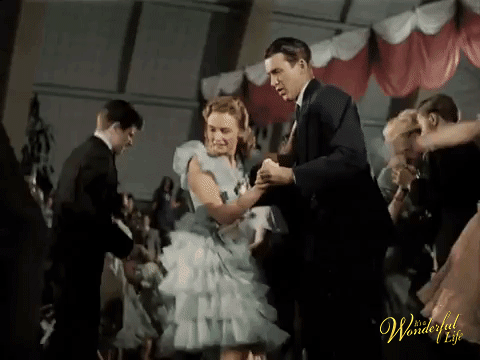
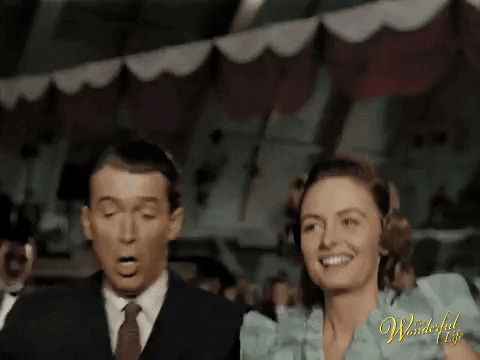


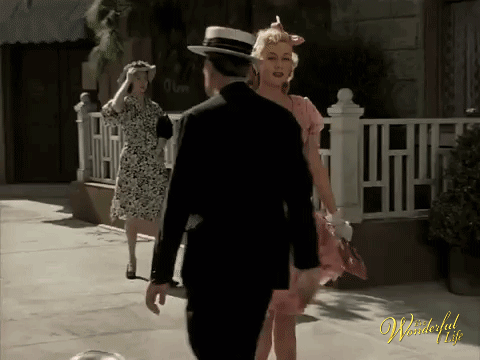

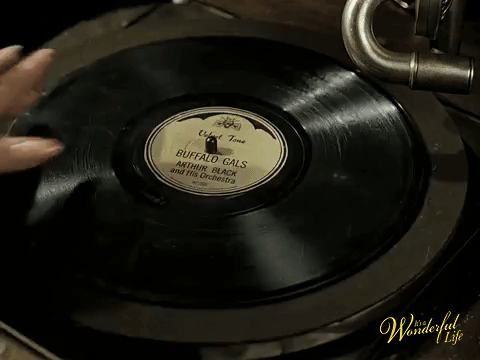
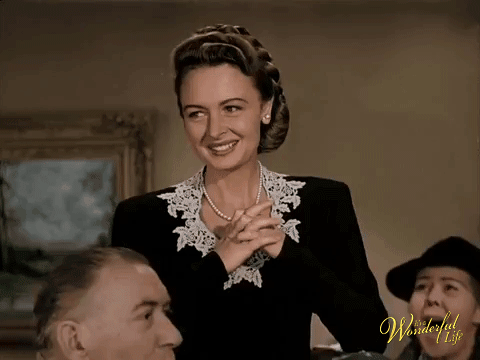

#It's a Wonderful Life#James Stewart#Donna Reed#Gloria Grahame#Frank Capra#The Greatest Gift#Philip Van Doren Stern
30 notes
·
View notes
Text

Read the books that inspired your favorite Christmas movies!
The Greatest Gift by Philip Van Doren Stern inspired It’s a Wonderful Life.
Skipping Christmas by John Grisham inspired Christmas with the Kranks.
In God We Trust: All Others Pay Cash by Jean Shepherd inspired A Christmas Story.
The Christmas Box by Richard Paul Evans inspired The Christmas Box.
See more of Christina’s recs...
#LCPL recs#christina w's recs#the greatest gift#philip van doren stern#it's a wonderful life#skipping christmas#christmas with the kranks#john grisham#in god we trust all others pay cash#jean shepherd#a christmas story#the christmas box#richard paul evans#christmas books#christmas movies
13 notes
·
View notes
Text
“You had the greatest gift of all conferred upon you--the gift of life, of being part of this world and taking a part in it. Yet you denied that gift.”
#the greatest gift#philip van doren stern#its a wonderful life#christmas#books#book quote#quote#public library
2 notes
·
View notes
Text
Christmas Classics 2 - It's A Wonderful Life
Christmas Classics 2 – It’s A Wonderful Life

It’s a Wonderful Life is often considered among the most beloved American movies in history. It’s based on a short story called The Greatest Gift, written by Philip Van Doren Stern. The movie first released in 1946, 3 years after the short story finally released after years of trying. The short story was initially rejected by several publishers, so he printed it as a 24-page pamphlet and mailed…
View On WordPress
#christmas#christmas classics#christmas movies#clarence#donna reed#frank carpa#george bailey#henry travers#it&039;s a wonderful life#james stewart#lionel barrymore#mary hatch#movie review#movies#mr. potter#Philip Van Doren Stern#RKO Radio Pictures#the greatest gift
0 notes
Text
Best Books to Read Around the Holidays

There’s nothing quite as cosy as curling up with hot cocoa and a festive book on a winter night. This holiday season, rediscover classic Christmas books along with modern reads that can help any Grinch join the celebration. From classic Christmas stories like A Christmas Carol and The Night Before Christmas to poetry by Maya Angelou and children’s books like Rudolph the Red-Nosed Reindeer, there are options for everyone. Whether you’re interested in Christmas books for adults or kids, here are some of the best Christmas books to read this holiday season.
A Christmas Story, Jean Shepherd
Be warned: A Christmas Story is funny enough to make any Scrooge laugh out loud. The classic 1983 comedy movie A Christmas Story draws inspiration from anecdotes you can find in Jean Shepherd’s 1966 and 1971 essay collections to tell a story for the ages. Retold in full in this collection, A Christmas Story is perfect for anyone looking for a good chuckle this winter. The semi-autobiographical tale focuses on nine-year-old Ralphie Parker’s shenanigans—and scheming to receive grown-up gifts like an air rifle—during one Christmas.
Rudolph the Red-Nosed Reindeer, Robert L. May
The iconic song isn’t the only way to share the story of the world’s most beloved reindeer this holiday season. Rudolph the Red-Nosed Reindeer started as a book in 1939 when Robert L. May, a copywriter, was tasked with writing a new story for Christmas. Now, more than half a century later, the story of Rudolph is inextricable from seasonal celebrations. This edition of the book features the original 1939 illustrations by Denver Gillen, which paved the way for how we see the famous red-nosed reindeer.
The Tailor of Gloucester, Beatrix Potter
One of the best children’s Christmas books is The Tale of Peter Rabbit author Beatrix Potter’s iconic Christmas tale, The Tailor of Gloucester. The book’s premise is a bit distressing — a poor tailor works hard to make it through a cold and long winter — but the story brightens up early on, as the tailor discovers a group of mice who want to help him do his work.
The Greatest Gift, Philip Van Doren Stern
Pretty much everyone has seen the Oscar-winning classic Christmas movie It’s a Wonderful Life. But it’s worth cracking open the text that inspired the film. Philip Van Doren Stern’s The Greatest Gift, written and originally published in 1943, offers a chance to see the world through new eyes. As protagonist George Pratt contemplates suicide on Christmas Eve, a stranger approaches him and grants his wish: that he’d never been born in the first place. After George gets to see how life for his loved ones would be without him — including some striking realities — he realizes what life’s “greatest gift” truly is.
The Polar Express, Chris Van Allsburg
In the realm of Christmas books for children, The Polar Express is hard to beat. The 1985 book, which inspired the 2004 animated movie starring Tom Hanks, tells the story of a young boy woken up by a train waiting outside his house on Christmas Eve. The boy goes on a wild Christmas adventure that any child would envy, befriending elves and even Santa Claus along the way — with plenty of teachable moments sprinkled throughout.
The Nutcracker, E.T.A. Hoffmann
Originally written in 1816, the story of German author E.T.A. Hoffmann’s The Nutcracker has become a holiday icon in its own right. Most notably remembered through George Balanchine’s ballet, this tale begins on Christmas Eve. Hoffmann’s book centres on young Marie, for whom the evening takes a fanciful turn after the discovery of a Nutcracker toy. When the clock strikes midnight, every toy becomes alive, a mouse with multiple heads emerges and the holiday is forever changed for Marie.
Amazing Peace: A Christmas Poem, Maya Angelou
Any Maya Angelou writing can have a warming effect on a reader, and she shines on Christmas poetry. Amazing Peace encourages and inspires readers to experience togetherness and serenity. “It is Christmas time, a halting of hate time,” Angelou writes in the illuminating, spiritual poem.
A Christmas Carol and Other Stories, Charles Dickens
A Christmas Carol has been the quintessential classic Christmas book for generations. Charles Dickens’ story follows the embittered Ebenezer Scrooge, a man who hates Christmas and all that it represents. But everything changes for Scrooge when three ghosts visit to retell the stories of his past, present and future. This edition of the story also reprints four other lesser-known Christmas tales by Dickens.
Hercule Poirot’s Christmas, Agatha Christie
From one of our most celebrated mystery writers comes this intense and spooky story for the holidays. Agatha Christie’s Hercule Poirot’s Christmas is not for the faint of heart. The page-turning detective story focuses on a murder that happens in the Lee family home on Christmas Eve. When Hercule Poirot, who is visiting a friend for the holiday, offers to help the family solve the murder, he finds himself entangled in a web of suspicion.
Letters From Father Christmas, J.R.R. Tolkien
Though J.R.R. Tolkien is known for his prolific Lord of the Rings series, the author wrote about more than just hobbits and wizards. Each Christmas, Tolkien wrote letters to his children that detailed stories of adventures on the North Pole. But for these four kids, the letters weren’t from their father — they were from Father Christmas. Letters From Father Christmas is an inventive and kid-friendly collection of stories from one of our greatest fantasy writers.
Little Women, Louisa May Alcott
Though Little Women needs no introduction, it may not always be considered a Christmas classic. However, Louisa May Alcott’s iconic 19th-century coming-of-age novel, in which four sisters share the stories of their adolescence, is ideal for a re-read this time of year — and delivers memorable Christmas elements.
How the Grinch Stole Christmas!, Dr. Seuss
After there was Ebenezer Scrooge, there was the Grinch — not the Jim Carrey movie version, but Dr. Seuss’ classic children’s book. The Grinch is an angry creature living on a mountain overlooking Whoville, a fictional town with a Christmas obsession. The Grinch decides to take his hatred for the holiday to a new level by stealing all the gifts in town. Written in rhymed verse with Seuss’ famous illustrations, How the Grinch Stole Christmas is an all-time favourite.
The Night Before Christmas, Clement Clarke Moore
‘Was there ever a night before Christmas on which this poem’s iconic opening line was forgotten? Though there are many adaptations of Clement Clarke Moore’s rhyming lines, the original still reigns as one of the best classic Christmas poems of all time. This edition features beautiful illustrations by Tasha Tudor, making it a captivating read to share with children.
Afterwards: A Ghost Story for Christmas, Edith Wharton
Pulitzer Prize-winning author Edith Wharton has published a plethora of acclaimed novels, short stories and poems, but this lesser-known work is ideal for the holiday season. Wharton’s story Afterward: A Ghost Story for Christmas is the perfect hybrid of Halloween and Christmas. Afterward may frighten more than it will inspire with holiday joy, but what’s Christmas without a little excitement?
A Christmas Memory, Truman Capote
Truman Capote, the man behind Breakfast at Tiffany’s, also wrote the classic short story A Christmas Memory, which was first published in 1956. The story centres on a young boy named Buddy whose best friend is his cousin, an older woman, with whom he makes fruitcakes from scratch in the beloved tale. This Christmas classic is actually a semi-fictionalized account of Capote’s own childhood.
Wuthering Heights, Emily Bronte
Though Wuthering Heights is the only book by Emily Bronte, both the novel and its enduring fame speak for themselves. This classic work of gothic fiction, featuring scenes set during Christmas, is perfect to read by candlelight and teaches its reader about passion, morality and humanity.
Hope you have a great reading and the best holiday.
♥ HAPPY HOLIDAYS ♥
5 notes
·
View notes
Text
december books roundup:
violet bent backwards over the grass by lana del ray
deaf republic by ilya kaminsky
are prisons obsolete? by angela davis
the new jim crow by michelle alexander
animal farm by george orwell
me and earl and the dying girl by jesse andrews
power politics by margaret atwood
the trial of the chicago 7 [screenplay] by aaron sorkin
the great gatsby by f. scott fitzgerald
the hating game by sally thorne
daisy jones and the six by taylor jenkins reid (reread)
why does he do that? by lundy bancroft
the anatomy of story by john truby (reread)
1984 by george orwell
harry potter and the sorcerer’s stone by j.k. rowling (reread)
harry potter and the chamber of secrets by j.k. rowling (reread)
harry potter and the prisoner of azkaban by j.k. rowling (reread)
harry potter and the goblet of fire by j.k. rowling (reread)
harry potter and the order of the phoenix by j.k. rowling (reread)
harry potter and the half-blood prince by j.k. rowling (reread)
harry potter and the deathly hallows by j.k. rowling (reread)
my dark vanessa by kate elizabeth russell
the greatest gift by philip van doren stern
in other lands by sarah rees brennan
6 notes
·
View notes
Photo

"La Vie est Belle (It's a Wonderful Life)" de Frank Capra (1946) - d'après "The Greatest Gift" nouvelle de Philip Van Doren Stern (1943) - avec James Stewart, Donna Reed, Thomas Mitchell, Henry Travers, Lionel Barrymore et Gloria Grahame, décembre 2020.
2 notes
·
View notes
Photo

It’s a wonderful life (1946)
“Strange isn’t it? Each man’s life touches so many other lives. When he isn’t around he leaves an awful hole, doesn’t he?
George Bailey is a good and sympathetic person. He inherits from his father a small business, which contradicts with the interests of Henry Potter, the richest person in town. On Christmas Eve his uncle loses their last money and George is most likely to be imprisoned. With no hope he thinks of killing himself. The only thing that could save him is a stranger, who appears claiming to be his guardian angel!
This is a movie for the ages. So classic but also new. Almost a century after its release it remains the most loved and played christmas movie ever. Some people have seen it, some others claim that they have, even though they know nothing about it. The movie presents the value of life and how every single one of us is important for the lives of others. Being black and white is actually my favourite element, because it adds to the old movies style. The - going back in time- narrative may seem not so original nowadays, but think about the cinema in 1946, it never happened!! Plus this is where other movies of this genre were inspired from later on. With all of these in mind, this movie is a perfect choice for the holidays, that could never let you down. And to those of you who haven’t seen it, I don’t know what you are still doing here!! Go check it out.
Genre:Comedy, Drama
Directed by:Frank Capra
Based on: “The Greatest Gift” by Philip Van Doren Stern
#its a wonderful life#christmas#christmas movie#christmas movies#james stewart#donna reed#frank capra#classic#classic movie#classic christmas#comedy#drama#comedy movie#drama movie#1946#1946movie#movies#moviesuggestions#movie recommendation
2 notes
·
View notes